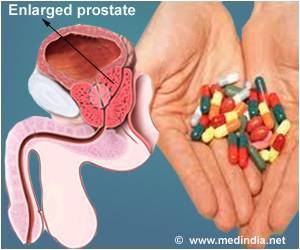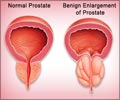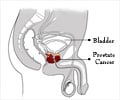Open prostatectomy and TURP remain as gold standards and serve as references for comparison of newer transurethral approaches.

However, multiple complications produced by TURP have forced researchers to search for methods that retained the efficacy but cut down the adverse events. Increased risk of bleeding, blood transfusions, urinary incontinence, retrograde ejaculation and prolonged hospital stay are the important complications of TURP. Recent years have seen the advent of a number of new surgical options. Development of drug therapies and minimally invasive techniques has brought about a decrease in the number of TURPs performed worldwide.
Open simple prostatectomy, one of the oldest interventions, is still considered a recommended treatment in some cases of enlarged prostate. The first laparoscopic simple prostatectomy was described in 2002. Laparoscopic surgeries are performed through tiny incisions in the body. They allow shorter hospital stay and time of catheterisation. Reduction in bleeding is also an advantage.
Technical modifications led to the development of the new technique of robotic-assisted simple prostatectomy (RASP). Functional outcome of RASP is highly encouraging. Medical applicability of LASER produced an alternative to TURP. Prostate laser vaporization evolved in the last 15 years. Laser resections can be performed using different energy sources. A number of studies have evaluated the efficacy and complications unique to each source.
Neodymium: yttrium-aluminium-garnet (Nd:YAG) laser, for example, is associated with painful urination and longer catheterisation following surgeries. The green light laser HPS 120W represents the latest innovation and is useful even for prostates larger than 80g.
Traditional TURP also has a worthy alternative called TUR holmium laser enucleation of the prostate (HoLEP). It is known to be a safe and effective procedure for treating symptomatic BPH. It is useful irrespective of prostate size, and allows shorter hospital stay. HoLEP, however demands significant experience and training.
Tissue changes induced by heating depend on the temperature achieved in the tissue. Thermocoagulation is attained above 45 degrees. The failure of the transrectal or transurethral hyperthermia devices prompted researchers to develop transurethral microwave heat treatment. The Prostatron device received approval after five years of rigorous testing.
The CoreTherm (ProstaLund) is a way to use microwave thermotherapy by monitoring the actual temperature in prostate tissue during treatment. Specially designed intraprostatic temperature probes are employed for this. CoreTherm allows treatment to be highly individualized and controlled. It can be stopped when adequate tissue destruction is achieved.
Transurethral needle ablation (TUNA) is employed as an outpatient procedure. During TUNA, a special visual instrument called cystoscope is inserted through the tip of penis into the urethra (the tube that carries urine from bladder). Tiny needles are guided into the prostate and radio waves are passed through them. Radio waves create scar in the prostate tissue thereby shrinking the enlarged gland. This opens up the urinary channel so that urine can flow more easily.
Microwave thermotherapy (transurethral microwave therapy; TUMT) are effective alternatives to TURP for treating symptomatic BPH in men with no history of urinary retention or previous prostatic procedures.
Despite the evolving strategies for treatment of BPH, open prostatectomy and TURP stand the tests of time. They remain as gold standards and serve as references for comparison of newer transurethral approaches.
Reference: Recent Advances in Surgery for Benign Prostatic Hyperplasia; Bernardo et al; Ther Adv Urol. (6):263-272
Source-Medindia






![Prostate Specific Antigen [PSA] Prostate Specific Antigen [PSA]](https://www.medindia.net/images/common/patientinfo/120_100/prostate-specific-antigen.jpg)






